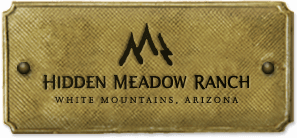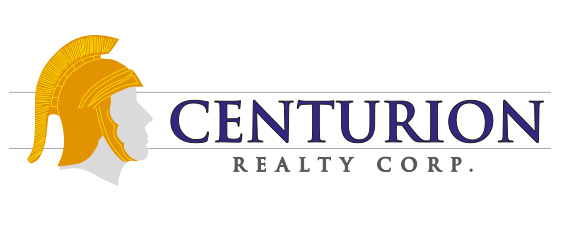Area Day Trips
Butterfly Lodge Museum
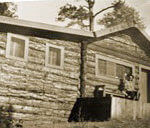 This rustic log cabin was the mountain retreat and hunting lodge of Western author James Willard Schultz (1859-1947) and later the home of his artist son, Hart Merriam “Lone Wolf” Schultz (1882-1970). Works of these two colorful and creative men are on display throughout the museum, which is also filled with original furnishings and artifacts that reflect pioneer life in the early 1900s. (20 minutes)
This rustic log cabin was the mountain retreat and hunting lodge of Western author James Willard Schultz (1859-1947) and later the home of his artist son, Hart Merriam “Lone Wolf” Schultz (1882-1970). Works of these two colorful and creative men are on display throughout the museum, which is also filled with original furnishings and artifacts that reflect pioneer life in the early 1900s. (20 minutes)
Little House Museum
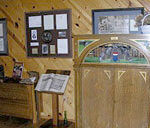 Little House MuseumThis museum consists of authentically restored buildings filled with antiques and artifacts from the Old West, turn-of-the-century fashions and rare vintage musical instruments. Learn of the settlement of the Eastern Arizona territory and of the conflicts and hardships of those early settlers. (30 minutes)
Little House MuseumThis museum consists of authentically restored buildings filled with antiques and artifacts from the Old West, turn-of-the-century fashions and rare vintage musical instruments. Learn of the settlement of the Eastern Arizona territory and of the conflicts and hardships of those early settlers. (30 minutes)
Casa Malpais Archaeological Park
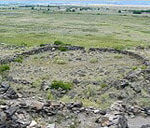 Casa Malpais Archaeological ParkFirst visited by anthropologist Frank Hamilton Cushing in 1883, Casa Malpais was labeled the “Fissure Pueblo” because it is situated on an extensive basalt lava flow. Builders of the pueblo took advantage of volcanic fissures for construction. The site was declared a National Historic Landmark in 1964. Casa Malpais Archaeological Park and Museum officially opened in 1993. This unique site features an astronomical calendar, a great kiva, ancient stairways, and rock art from the Mogollon culture. The museum features artifacts from Casa Malpais and a video introduction by Hopi and Zuni elders. (35 minutes)
Casa Malpais Archaeological ParkFirst visited by anthropologist Frank Hamilton Cushing in 1883, Casa Malpais was labeled the “Fissure Pueblo” because it is situated on an extensive basalt lava flow. Builders of the pueblo took advantage of volcanic fissures for construction. The site was declared a National Historic Landmark in 1964. Casa Malpais Archaeological Park and Museum officially opened in 1993. This unique site features an astronomical calendar, a great kiva, ancient stairways, and rock art from the Mogollon culture. The museum features artifacts from Casa Malpais and a video introduction by Hopi and Zuni elders. (35 minutes)
Apache Cultural Museum & Fort Apache Historical Park
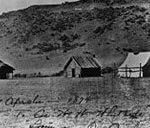 Apache Cultural Museum & Fort Apache Historical ParkIn 2012, Fort Apache and Theodore Roosevelt School were named a National Historic Landmark. Fort Apache served as a U.S. Army Post from 1870 to 1922. In 1923, the property became a boarding school and remains a Middle School for the Apaches today. Now there is a museum to chart this history and celebrate Apache culture. (1.25 hours)
Apache Cultural Museum & Fort Apache Historical ParkIn 2012, Fort Apache and Theodore Roosevelt School were named a National Historic Landmark. Fort Apache served as a U.S. Army Post from 1870 to 1922. In 1923, the property became a boarding school and remains a Middle School for the Apaches today. Now there is a museum to chart this history and celebrate Apache culture. (1.25 hours)
Petrified Forest National Park
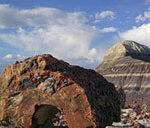 Petrified Forest National ParkPetrified Forest was set aside as a national monument in 1906 to preserve and protect the petrified wood for its scientific value. It is recognized today for having so much more, including a broad representation of the Late Triassic paleo-ecosystem, significant human history, clear night skies, fragile grasslands ecosystem, and unspoiled scenic vistas. Paleontologists find new fossils, including new species of plants and animals, each year, and the museum has over 200,000 artifacts for viewing. (1.25 hours)
Petrified Forest National ParkPetrified Forest was set aside as a national monument in 1906 to preserve and protect the petrified wood for its scientific value. It is recognized today for having so much more, including a broad representation of the Late Triassic paleo-ecosystem, significant human history, clear night skies, fragile grasslands ecosystem, and unspoiled scenic vistas. Paleontologists find new fossils, including new species of plants and animals, each year, and the museum has over 200,000 artifacts for viewing. (1.25 hours)
Zuni Pueblo, NM
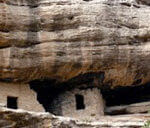 Zuni Pueblo, NM A visit to the Zuni Pueblo offers visitors an experience rooted in a deep cultural heritage, exquisite arts and jaw-dropping scenic beauty. The Zuni Pueblo is the largest of the 19 New Mexican Pueblos, with a population of more than 10,000 on more than 700 square miles. The Zunis are considered the most traditional of the New Mexico Pueblos, with a unique language, culture and history that resulted in part from their geographic isolation. Approximately 80% of the Zuni workforce is involved in making the art for which they are renowned. Tours should be arranged in advance. (2 hours)
Zuni Pueblo, NM A visit to the Zuni Pueblo offers visitors an experience rooted in a deep cultural heritage, exquisite arts and jaw-dropping scenic beauty. The Zuni Pueblo is the largest of the 19 New Mexican Pueblos, with a population of more than 10,000 on more than 700 square miles. The Zunis are considered the most traditional of the New Mexico Pueblos, with a unique language, culture and history that resulted in part from their geographic isolation. Approximately 80% of the Zuni workforce is involved in making the art for which they are renowned. Tours should be arranged in advance. (2 hours)
Hubbell Trading Post National Historic Site
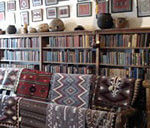 Hubbell Trading Post National Historic Site John Lorenzo Hubbell purchased the trading post in 1878, ten years after Navajos were allowed to return to their homeland from their terrible exile at Ft. Sumner, New Mexico. Hubbell had an enduring influence on Navajo rugweaving and silversmithing, for he consistently demanded and promoted excellence in craftsmanship. He built a trading empire that included stage and freight lines as well as several trading posts. Beyond question, he was the foremost Navajo trader of his time.
Hubbell Trading Post National Historic Site John Lorenzo Hubbell purchased the trading post in 1878, ten years after Navajos were allowed to return to their homeland from their terrible exile at Ft. Sumner, New Mexico. Hubbell had an enduring influence on Navajo rugweaving and silversmithing, for he consistently demanded and promoted excellence in craftsmanship. He built a trading empire that included stage and freight lines as well as several trading posts. Beyond question, he was the foremost Navajo trader of his time.
Hubbell family members operated the trading post until it was sold to the National Park Service in 1967. The trading post is still active, continuing the trading traditions the Hubbell family started. Nearly everything the Hubbell family owned is preserved for your enjoyment, with the buildings furnished with their belongings and artifacts available for researchers. (2.25 hours)
Navajo Museum
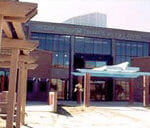 Navajo MuseumThe extraordinary Navajo-focused collections include a wide range of historic, ethnographic and art objects; the Milton “Jack” Snow Collection and other historic photographic archives dating from 1930 to the1970s; and a small number of natural history specimens. Limited-term theme exhibitions are used to explore diverse aspects for the Navajo people and culture. (2.25 hours)
Navajo MuseumThe extraordinary Navajo-focused collections include a wide range of historic, ethnographic and art objects; the Milton “Jack” Snow Collection and other historic photographic archives dating from 1930 to the1970s; and a small number of natural history specimens. Limited-term theme exhibitions are used to explore diverse aspects for the Navajo people and culture. (2.25 hours)
Canyon de Chelly National Monument
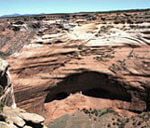 Canyon de Chelly National MonumentEons of land uplifts and stream-cutting created the colorful sheer cliff walls of Canyon de Chelly. Natural water sources and rich soil provided a variety of resources, including plants and animals that have sustained families for thousands of years. The Ancient Puebloans found the canyons an ideal place to plant crops and raise families. The first settlers built pit houses that were then replaced with more sophisticated homes as more families migrated to the area. More homes were built in alcoves to take advantage of the sunlight and natural protection. People thrived until the mid-1300s when the Puebloans left the canyons to seek better farmlands. Canyon de Chelly National Monument was authorized in 1931 by President Herbert Hoover to preserve the important archeological resources that span more than 4,000 years of human occupation. (3 hours)
Canyon de Chelly National MonumentEons of land uplifts and stream-cutting created the colorful sheer cliff walls of Canyon de Chelly. Natural water sources and rich soil provided a variety of resources, including plants and animals that have sustained families for thousands of years. The Ancient Puebloans found the canyons an ideal place to plant crops and raise families. The first settlers built pit houses that were then replaced with more sophisticated homes as more families migrated to the area. More homes were built in alcoves to take advantage of the sunlight and natural protection. People thrived until the mid-1300s when the Puebloans left the canyons to seek better farmlands. Canyon de Chelly National Monument was authorized in 1931 by President Herbert Hoover to preserve the important archeological resources that span more than 4,000 years of human occupation. (3 hours)
